


For over 50 years the travelling public have been used to flying on giant airliners. Sadly this experience is slowly coming to an end with manufacturers Boeing and Airbus both ending production of their Jumbo -sized jets.
The Boeing 747 first took to the skies in 1969 entering service a year later. Nearly 1600 of these ground-breaking jumbos will have been produced when the last one rolls off the assembly line in 2022. The big Boeing had the very large aircraft market to itself until 1998 when Airbus started studies into building an even bigger aircraft which would be 15-20 per cent more efficient than the American opposition.

Various delays and technical problems meant it wasn’t until April 2005 that the prototype Airbus A380 finally took to the Toulouse skies. Its double -decker ovoid fuselage led to it being named out of sequence with the rest of the Airbus range A300, A310, A320 etc as the shape of the huge fuselage capable of carrying 853 passengers resembled the figure eight hence A380. The Airbus jumbo somewhat missed the boat as the Boeing had entered service when airlines were committed to the hub and spoke type of operation which would see large aircraft like the 747 fly between major hubs where passengers would change onto smaller planes for the final leg of their journey to smaller airports. Times change however and passengers now want a non-stop journey as some of these hubs such as Dallas and Atlanta could be a nightmare due to the large number of passengers changing planes. With airlines having moved towards a point to point operation there was no longer the market for a very large aircraft, in fact it has been many years since US domestic routes featured a Boeing 747 and no sales of the A380 were made to US airlines.

When the last A380 is delivered in 2021 a total of just 251 will have been built with almost half of that number having been bought by Emirates Airlines. For them the hub and spoke system still works well as most of the Dubai-based airline’s flights are long-haul international routes. The unit cost of an A380 was $445 million. That however was still not enough to cover construction and the $25 Billion development costs. Therefore in 2019 Airbus announced that with orders drying up and airframes being produced at a loss the plug would be pulled on the production of the world’s largest airliner after the last few orders had been completed. As these words are being typed the very last aircraft is being assembled in Toulouse.
With such a large aircraft Airbus had its partners in France, Germany, Spain and the UK all contribute to the production. Here in the UK the wings (like all previous Airbus wings) were made in Chester and then shipped by barge/ferry or special Beluga freight aircraft to the factory in Toulouse. Rolls Royce built the modified Trent engine for the aircraft, one of just two power options available. To ship the large components not just the Beluga freighter but special ships and ground vehicles had to be designed and constructed to ferry the components to Toulouse. The final assembly and test flying was done at Toulouse then the aeroplane would be flown to Hamburg for painting and fitting-out to the customer’s requirement. Painting would use 3,600 litres of paint.

With a target to be 15/20 per cent more efficient than the Boeing, Airbus came up with a number of technical innovations to save weight. On a traditional aircraft the wiring, just like that in your house, uses copper as the conductor. With 330 miles of cable in this huge aircraft that copper would be a hefty weight so the decision was made to use lightweight aluminium as the conductor instead. This however caused problems as aluminium is not as flexible as copper and cannot be bent to the same tight radius. Sadly this came to light during final assembly of the prototype when it was found some of the wiring looms would not fit, this caused a major delay in the prototype’s first flight and several senior members of Airbus management lost their jobs.
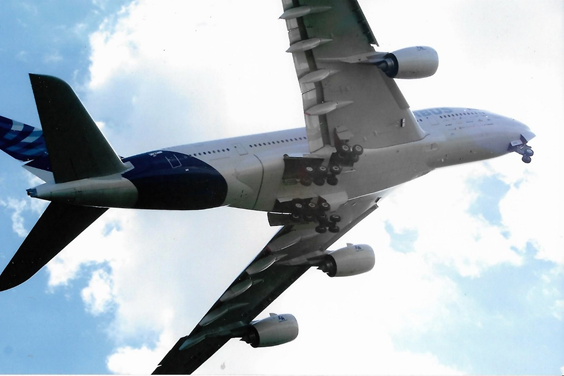
Another innovation was in the hydraulic system. Again conventional airliners had always used a system which ran at 3000psi, on the A380 however the system pressure is 5000psi. This allows the pipe diameter to be reduced and with smaller pipes more weight is saved. One of the biggest weight savers was to construct the wing box (the part that joins the wings to the fuselage) out of carbon-fibre reinforced plastic. This was the first time such composite material had been used to construct a wing box. In total 28 per cent of the airframe was built using composite materials.
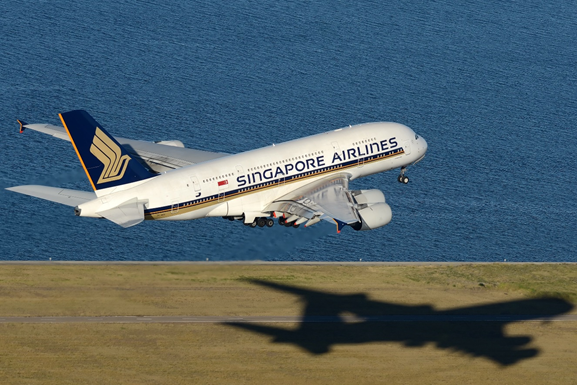
With a usable cabin floor area of 5,920 square feet, 40 per cent more than the latest 747-8 the A380 was certified to carry up to 853 passengers, however most airlines seated around 525. As part of the certification process Airbus had to demonstrate that 853 passengers plus 20 crew could evacuate the aeroplane in the approved time of 90 seconds. During a test, eight of the 16 exits were blocked off and all 873 souls managed to get down the escape slides in just 78 seconds.
The flight deck featured Airbus’ now familiar all-glass displays and the flight control system was fully fly-by-wire, first trialled on the earlier A310 and then fitted as standard throughout the A320 range. The pilots used a small side stick to fly the aeroplane.
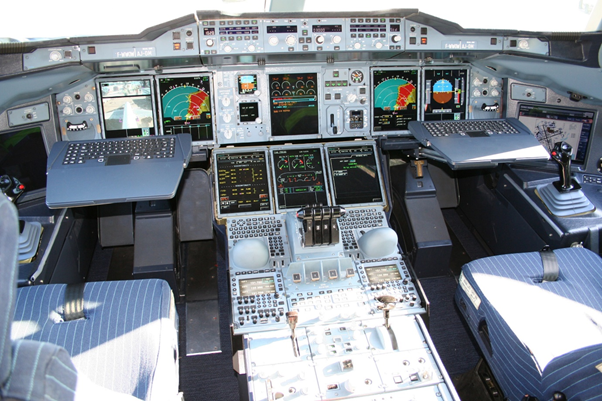
Two years after the maiden flight the first aeroplane was delivered to the launch customer Singapore Airlines in October 2007. Deliveries to Emirates and Qantas quickly followed but it wasn’t until October 2009 that the first European-based aircraft arrived when Air France took its first delivery. To build up crew hours and bed the aircraft in before they started long haul flights, Air France operated the super jumbo for some weeks on the Heathrow-Paris route with many flights sold out such was the public interest in the new super jumbo. With a sense of space, staircases between the decks and a TV system which allowed you to look out in front of the plane or straight down to earth you could follow your progress from gate to gate as if you were the pilot.
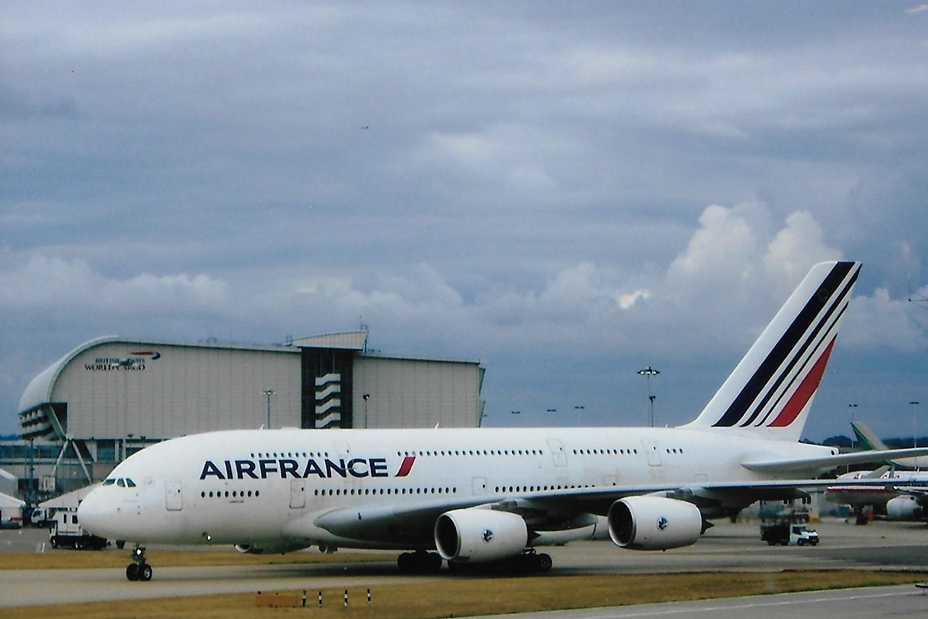
Sales of the super jumbo started well with many orders from the Middle and Far East airlines with Emirates, Qatar, Etihad, Malaysia, Singapore and Thai airlines ordering the jet. The biggest customer for the A380 would be Emirates who eventually ordered 123 examples. The 100th example built was delivered to Malaysian Airlines in March 2013 and by the following March 65 million passengers had been carried aloft by the Airbus jumbo. Lufthansa and British Airways ordered small fleets as did Korean, China Southern and Asiana Airlines. The last customer for the super jumbo is All Nippon of Japan who will take delivery of their last example sometime in 2021.This and eight aircraft for Emirates will be the last A380s to be made.
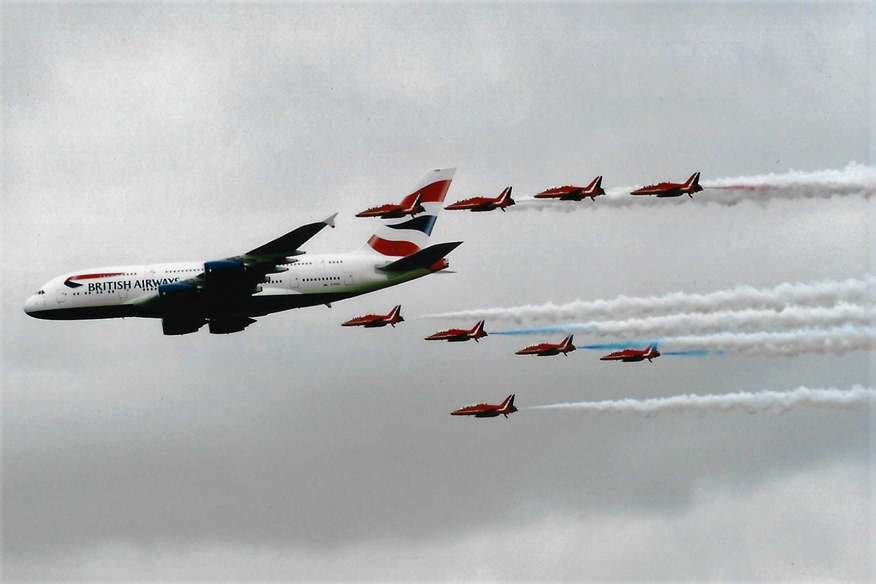
With all that space in the cabin several airlines used it in innovative ways. The Middle East airlines in particular installed such luxuries as stand-up bars, showers and even bedroom suites. These made even the first class cabin of the Boeing 747 seem cramped. By around 2015 both Boeing and Airbus were finding sales of their jumbo size aircraft were drying up. As has been mentioned earlier the loss of hub and spoke operation had a lot to do with it as did advances in large jet engines which allowed larger twin jet aircraft such as the Boeing 777 and Airbus’s own A330 and new A350 to offer a more efficient and versatile aeroplane. The yet to be delivered Boeing 777-10 will be able to carry 426 passengers on just two engines, a huge saving in costs with only a relatively small drop in passenger capacity. It would seem that not only are we going to witness the end of the jumbo size jet but also the end of four engines on passenger aircraft. There were originally plans to build the A380F, an all freight version and from 2005-2013 this variant was listed in the A380 brochure. Despite original orders for 27 of this variant the project was never started and the orders were cancelled.
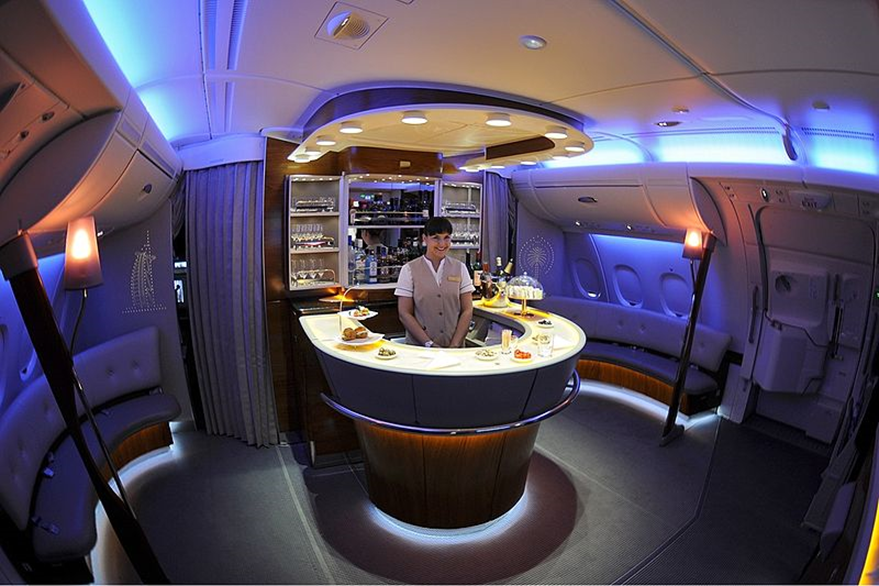
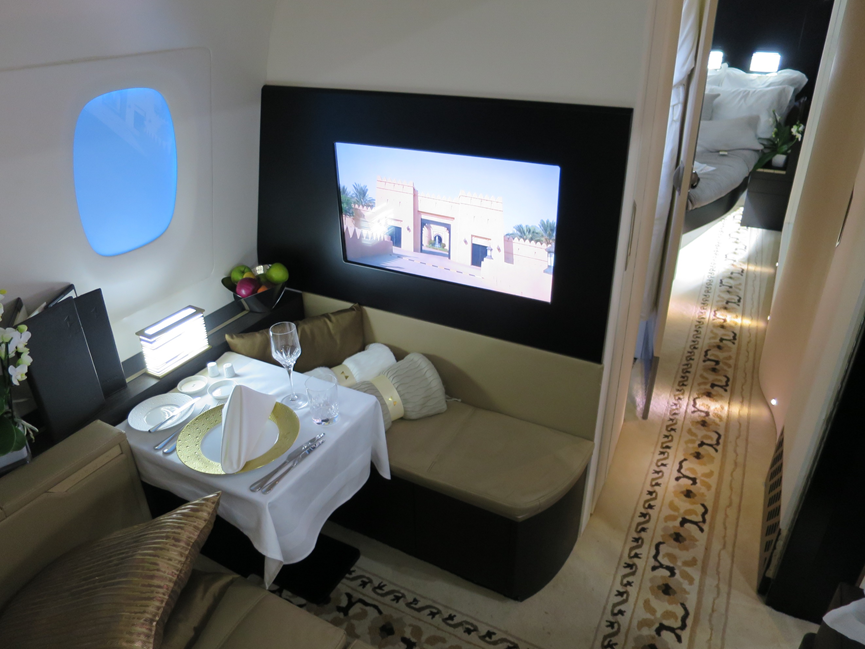
With the loss of new orders Airbus would have closed the A380 line earlier had it not been for the Emirates follow on orders, however when an additional order for over 30 of the jets was cancelled by the airline in favour of twin-jet Airbus A330 and A350 aircraft, it was the last nail in the coffin and Airbus announced the end of production in February 2019 with the last aircraft due to be delivered in 2021. Several airlines such as Singapore had already retired their aircraft but had found them hard to sell on the second hand market. With such a large fleet Emirates kept its older aircraft as spares ships for the rest of the fleet. Air France had already announced their intention of retiring their fleet and then Covid-19 arrived. Lufthansa and many of the 14 other A380 operators were forced to place their A380s along with many other aircraft into long term storage, how many will return to fly again is anybody’s guess.
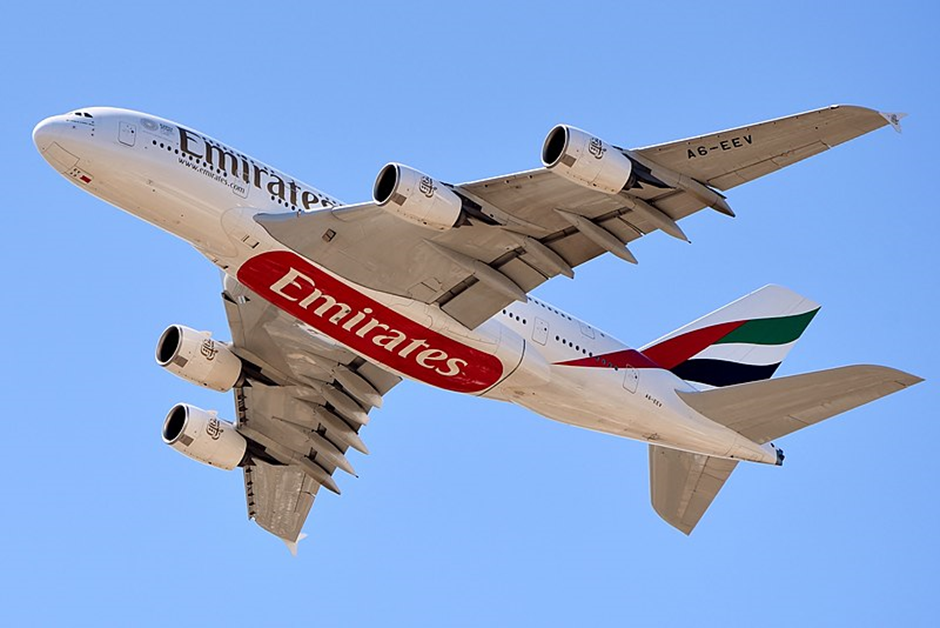
For the past 15 years we have been treated to the sight of the largest passenger aircraft ever made serenely gliding across the sky and for those lucky enough to have flown on one it was an experience not to be forgotten. There are now only a few passenger configured Boeing 747s remaining in service but unlike the A380, Boeing offered a cargo version almost from the outset so we will still see many of these whereas the only A380s still flying will be passenger aircraft. We end with a picture of an Emirates example without which the A380 may well have disappeared from our skies years ago.
‘till the next time Keith
Registered Charity No. 285809